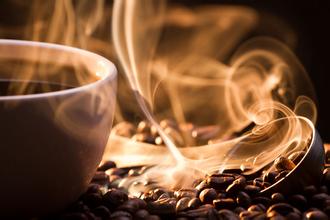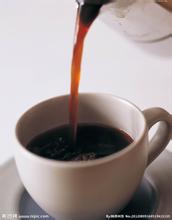Flavor and taste of Costa Rican boutique coffee beans introduction to Costa Rican coffee beans in manor production area
Generally speaking, Costa Rica always prides itself on its exquisite water-washed coffee. It always picks ripe coffee fruits by hand and strictly controls the process of soaking and fermentation. the coffee produced under this process has an excellent balance of clean flavor and taste complexity; it has always been highly regarded in the industry.
However, in recent years, a new method of "honey" treatment has become fashionable, because there is no need to invest in huge water tanks and drying fields, so that many independent manors or small cooperatives can afford it. With the application of this new treatment, a kind of "honey-treated coffee" with high sweetness, low acidity and complex taste has become the goal of the coffee industry in recent years. One of the best in recent years in the major competitions, so as to greatly enhance the popularity of the manor, Don Mayo is one of them.
The key to honey treatment lies in the amount of pulp retained. The more it is retained, the more distinctive the honey treatment will be. However, the risk of excessive fermentation is higher, and the characteristics of each "Honey cofffee" will vary according to different conditions, such as the local climate (sunshine / rainfall probability / air humidity), or the processor's preference. According to Nordic Approch, Seattle Coffee and Origin Coffee, the raw bean companies run by the big shot Tim, it can be summed up:
Yellow honey: about 40% of the pectin is removed; the drying method requires the most direct heat absorption, receives the most light drying, and lasts for about 8 days to reach a stable water content.
Red honey: about 25% of the pectin is removed; it takes longer to dry than yellow honey, and reduces direct exposure to sunlight, even in shading sheds, lasting about 12 days.
Black honey: almost no removal of pectin; drying takes the longest time, lasting at least 2 weeks, using covering to avoid too strong sunlight, prevent drying too fast, and make sugar conversion more fully.

Important Notice :
前街咖啡 FrontStreet Coffee has moved to new addredd:
FrontStreet Coffee Address: 315,Donghua East Road,GuangZhou
Tel:020 38364473
- Prev

Mantenin Coffee Bean in Sumatra Coffee producing area of Indonesia
Mantenin's leaping acid mixes with the richest aroma, making your relaxed body manning coffee lively in a mild fragrance, and its outstanding taste captivates many suitors. In the 17th century, the Dutch introduced Arabica seedlings to Ceylon (present-day Sri Lanka) and Indonesia. In 1877, a large-scale disaster struck Indonesia
- Next

Introduction of Java Coffee Bean Flavor and Taste Manor production area introduction of boutique coffee beans in Java, Indonesia
A cup of hot Java coffee makes these people realize that the realm of life is rich and quiet. Quiet, because of getting rid of the temptation of external fame and gain; rich, because of having the treasure of the inner spiritual world. The happiness of life is to reap such an incisive interpretation of the realm. Java coffee the sour, bitter and sweet tastes of Java coffee match just right. Unique fragrance
Related
- Detailed explanation of Jadeite planting Land in Panamanian Jadeite Manor introduction to the grading system of Jadeite competitive bidding, Red bid, Green bid and Rose Summer
- Story of Coffee planting in Brenka region of Costa Rica Stonehenge Manor anaerobic heavy honey treatment of flavor mouth
- What's on the barrel of Blue Mountain Coffee beans?
- Can American coffee also pull flowers? How to use hot American style to pull out a good-looking pattern?
- Can you make a cold extract with coffee beans? What is the right proportion for cold-extracted coffee formula?
- Indonesian PWN Gold Mandrine Coffee Origin Features Flavor How to Chong? Mandolin coffee is American.
- A brief introduction to the flavor characteristics of Brazilian yellow bourbon coffee beans
- What is the effect of different water quality on the flavor of cold-extracted coffee? What kind of water is best for brewing coffee?
- Why do you think of Rose Summer whenever you mention Panamanian coffee?
- Introduction to the characteristics of authentic blue mountain coffee bean producing areas? What is the CIB Coffee Authority in Jamaica?

